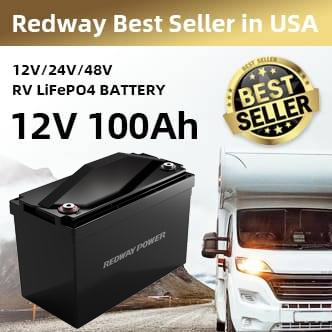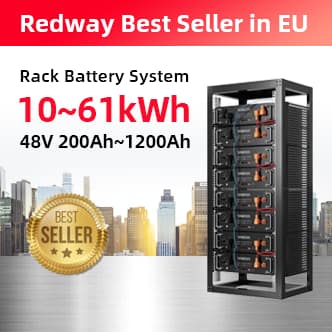As of 2025, the installed cost of a single Tesla Powerwall 3 generally ranges between $13,500 and $15,400 before incentives. The final price depends on factors such as location, installation complexity, additional electrical work, and whether it’s purchased alongside a solar system. Incentives can lower the net cost significantly.
What Is the Total Cost Breakdown of a Tesla Powerwall 3?
A typical single Powerwall 3 installation includes the battery unit, Gateway, mounting hardware, and professional labor, totaling around $15,400 before incentives.
| Component | Estimated Cost (USD) |
|---|---|
| Powerwall 3 Unit | $8,200 |
| Gateway | $900 |
| Mounting Hardware & Accessories | $200 |
| Professional Installation | $6,100 |
| Total Installed Cost | ~$15,400 |
The Powerwall 3 unit, with 13.5 kWh usable capacity, is the core component. The Gateway manages grid connection and backup. Mounting accessories and installation labor vary by project scope and region.
Wholesale lithium golf cart batteries with 10-year life? Check here.
How Do Incentives and Financing Reduce Powerwall Costs?
The 30% federal Residential Clean Energy Credit significantly lowers the system cost. State and local rebates may provide additional savings. Financing options help spread payments, making installations more affordable.
Federal tax credits apply to the total installation cost, helping reduce upfront expenses by potentially thousands of dollars. Many states complement this with incentives and rebates. Tesla and certified installers often offer financing plans, allowing homeowners to pay over time with manageable monthly amounts. Bundling storage with solar increases eligibility for credit and discounts.
Want OEM lithium forklift batteries at wholesale prices? Check here.
When Should You Consider Adding More Than One Powerwall?
Multiple Powerwalls are recommended for larger homes, increased backup duration, or higher power demands. Expansion units provide a cost-efficient way to scale capacity as needs grow.
Typical households may find one Powerwall sufficient for backup and energy load shifting. However, larger homes with electric vehicles, heat pumps, or extensive appliances often require additional units to cover longer outages or reduce peak utility usage. Tesla offers expansion units costing approximately $5,900–$6,000, seamlessly integrating with existing Powerwalls to add capacity modularly.
How Do Location and Electrical Upgrades Affect the Installed Price?
Labor rates, permit fees, and local regulations cause price variations. Older homes may need electrical panel upgrades costing $1,500 to $3,500 to safely accommodate the Powerwall.
Installations in high-cost regions like California or New York are generally pricier than in states with lower labor rates. Mandatory upgrades to electrical infrastructure, such as service panels or meter sockets, may increase the total cost and installation time. Site-specific characteristics like accessibility or system compatibility also influence pricing.
Why Is Installing a Powerwall With Solar Panels More Affordable?
Bundling Powerwall installation with solar or Solar Roof projects qualifies for discounts and financing options. Streamlined installation reduces labor and permit costs.
Simultaneous installs reduce redundant labor and materials, enhancing cost-efficiency. Integrated systems qualify for better incentives and financing programs. Combining solar with storage improves return on investment by maximizing energy independence and reducing utility bills.
How Does Tesla Powerwall 3 Performance Justify Its Cost?
The Powerwall 3 offers reliable 13.5 kWh capacity, fast response times, smart energy management, and integration with Tesla’s ecosystem, making it a premium energy storage solution.
Its intelligent software optimizes energy consumption, backup power, and grid interactions. The compact design, robust thermal management, and safety features ensure durability in diverse environments. These advantages reduce energy costs and improve resilience, providing long-term value beyond the initial price.
Where Can You Find and Purchase a Tesla Powerwall?
Tesla Powerwalls are available via Tesla-certified installers, Tesla’s official website, and authorized dealers across the U.S. and internationally.
Authorized installers evaluate site needs, provide quotes, and handle permitting and installation. Direct purchase inquiries can begin on Tesla’s website, but certification ensures compliance and warranty validation. Obtaining multiple quotes from certified professionals helps secure competitive pricing and quality service.
Can Redway Battery Provide Similar Lithium Battery Solutions?
Redway Battery manufactures high-performance LiFePO4 battery packs tailored for energy storage in residential, commercial, and industrial sectors, offering reliable alternatives to branded products like Tesla Powerwall.
Redway’s expertise in OEM lithium battery manufacturing spans applications including forklifts, golf carts, telecom systems, and solar storage. They provide customizable battery solutions designed for safety, durability, and high efficiency. With 13 years of industry experience and ISO 9001:2015 certification, Redway supports energy storage manufacturers seeking advanced lithium battery technology and dependable supply chains.
Redway Expert Views
“Lithium battery technology is the backbone of modern clean energy solutions. Products such as the Tesla Powerwall bring advanced energy management to homes, while companies like Redway Battery provide robust, customizable lithium packs for diverse uses across industries. By integrating efficient battery chemistry with rigorous manufacturing standards, we contribute to making sustainable energy both accessible and reliable worldwide.” – Redway Battery Engineering Team
Conclusion
Tesla Powerwall costs in 2025 range from $13,500 to $15,400 installed. The total price depends on installation complexity, location, and potential electrical upgrades. Federal, state, and local incentives as well as financing options can reduce upfront expense substantially. Bundling with solar improves affordability and system efficiency. Redway Battery’s OEM lithium solutions highlight the expanding role of customized, high-quality battery technology in energy storage. Selecting the right system and installer ensures maximum value and long-term energy resilience.
Frequently Asked Questions (FAQs)
Q1: What incentives are available for Tesla Powerwall installations?
There is a 30% federal tax credit and various state/local rebates that can lower costs.
Q2: Can I install a Powerwall without having solar panels?
Yes, the Powerwall can be installed as a standalone energy storage and backup system.
Q3: How much time does installation typically take?
Installation usually requires one to two days, depending on site conditions.
Q4: How many Powerwalls does the average household need?
Most homes only require one, but larger energy consumers or those wanting longer backup should consider multiple units.
Q5: Does Redway Battery directly sell Tesla Powerwalls?
No, Redway Battery provides OEM lithium battery packs and custom energy storage solutions but does not sell Tesla Powerwalls directly.





